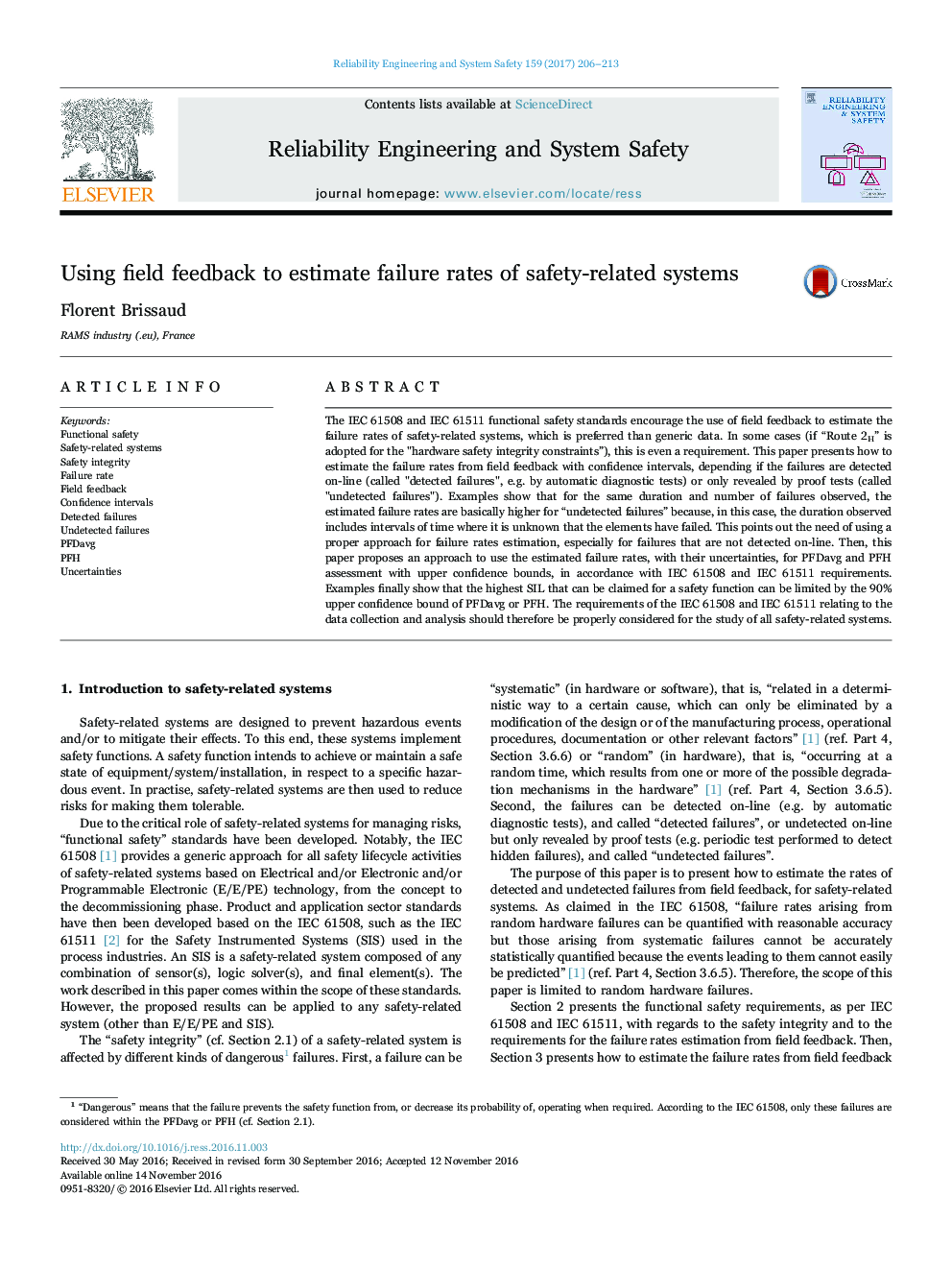| Article ID | Journal | Published Year | Pages | File Type |
|---|---|---|---|---|
| 5019616 | Reliability Engineering & System Safety | 2017 | 8 Pages |
Abstract
The IEC 61508 and IEC 61511 functional safety standards encourage the use of field feedback to estimate the failure rates of safety-related systems, which is preferred than generic data. In some cases (if “Route 2H” is adopted for the "hardware safety integrity constraints”), this is even a requirement. This paper presents how to estimate the failure rates from field feedback with confidence intervals, depending if the failures are detected on-line (called "detected failures", e.g. by automatic diagnostic tests) or only revealed by proof tests (called "undetected failures"). Examples show that for the same duration and number of failures observed, the estimated failure rates are basically higher for “undetected failures” because, in this case, the duration observed includes intervals of time where it is unknown that the elements have failed. This points out the need of using a proper approach for failure rates estimation, especially for failures that are not detected on-line. Then, this paper proposes an approach to use the estimated failure rates, with their uncertainties, for PFDavg and PFH assessment with upper confidence bounds, in accordance with IEC 61508 and IEC 61511 requirements. Examples finally show that the highest SIL that can be claimed for a safety function can be limited by the 90% upper confidence bound of PFDavg or PFH. The requirements of the IEC 61508 and IEC 61511 relating to the data collection and analysis should therefore be properly considered for the study of all safety-related systems.
Keywords
Related Topics
Physical Sciences and Engineering
Engineering
Mechanical Engineering
Authors
Florent Brissaud,
